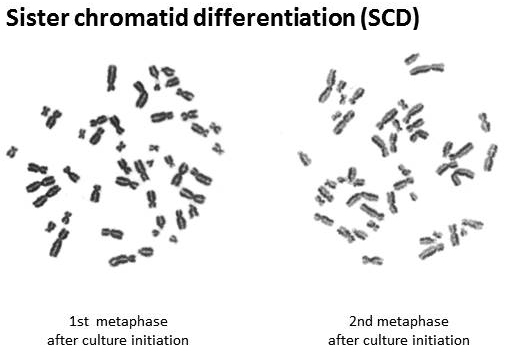

However, assessment of bone disease in both of these models was limited to histological analysis only. showed that BM infiltration of MOPC315.BM.Luc cells (a mineral oil-induced plasmacytoma) in NSG mice resulted in an increase of tartrate-resistant acid phosphatase (TRAP) positive osteoclasts in histological sections. They also demonstrated, by histological analysis, that U266 BM infiltration caused the development of osteolytic lesions. This showed U266 infiltration of the BM at the end stages of disease by fluorescence-activated cell sorting (FACS) using an anti-human CD45 antibody and by the presence of human IgE (which is produced by the U266 cells) in histological BM sections. were the first group to inject U266 cells (a myeloma cell line) into NSG mice via the tail vein. Further investigation is required to identify and validate the best models in terms of consistency of onset, degree of tumour infiltration and extent of MBD. However, there is limited information on the development of osteolytic disease in these models. The effect of anti-tumour agents on the growth of myeloma cells and the overall survival of animals has also been assessed in various NSG models. In these studies, a number of myeloma cell lines and patient-derived myeloma cells were injected into NSG mice leading to varying levels of BM infiltration. Most recently the immune-suppressed NOD/SCID-GAMMA (NSG) strain of mice has been used successfully in human xenograft models of MM. A number of pre-clinical animal models of MM have been developed to assess the efficacy of therapeutic agents used in the treatment of myeloma bone disease (MBD). One of the most debilitating features of MM is the development of osteolytic bone disease, which results in increased susceptibility to bone fractures, bone pain and hypercalcaemia. Despite continually improving treatments, myeloma is almost always incurable. Multiple myeloma (MM) is a cancer of differentiated B-lymphocytes leading to the clonal expansion of plasma cells in the bone marrow (BM).

In summary, JJN3, U266 or OPM-2 cells injected into NOD/SCID-GAMMA mice provide robust models to study anti-myeloma therapies, particularly those targeting myeloma bone disease. Treating U266-induced disease with zoledronic acid prevented the formation of osteolytic lesions and trabecular bone loss as well as reducing tumour burden whereas, carfilzomib treatment only reduced tumour burden. Injection of U266, XG-1, OPM-2 and patient-derived myeloma cells resulted in less aggressive longer-term models of myeloma with mice exhibiting signs of morbidity 8 weeks later. Treating these mice with zoledronic acid at the time of tumour cell injection or once tumour was established prevented JJN3-induced bone disease but did not reduce tumour burden, whereas, carfilzomib treatment given once tumour was established significantly reduced tumour burden. Injection of JJN3 cells into NOD/SCID-GAMMA mice resulted in an aggressive, short-term model of myeloma with mice exhibiting signs of morbidity 3 weeks later. In contrast, mice injected with XG-1 or patient-derived myeloma cells showed lower tumour bone marrow infiltration and less bone disease with high variability. Mice injected with JJN3, U266 or OPM-2 cells showed high tumour bone marrow infiltration of the long bones with low variability, resulting in osteolytic lesions. Tumour load was measured by histological analysis, and bone disease was assessed by micro-CT and standard histomorphometric methods. At the first signs of morbidity in each tumour group all animals were sacrificed. Groups of 7–8 week old female irradiated NOD/SCID-GAMMA mice were injected intravenously via the tail vein with either 1x10 6 JJN3, U266, XG-1 or OPM-2 human myeloma cell lines or patient-derived myeloma cells. Here we describe five pre-clinical models of myeloma in NOD/SCID-GAMMA mice to specifically study the effects of therapeutic agents on myeloma bone disease. Animal models of multiple myeloma vary in terms of consistency of onset, degree of tumour burden and degree of myeloma bone disease.


 0 kommentar(er)
0 kommentar(er)
